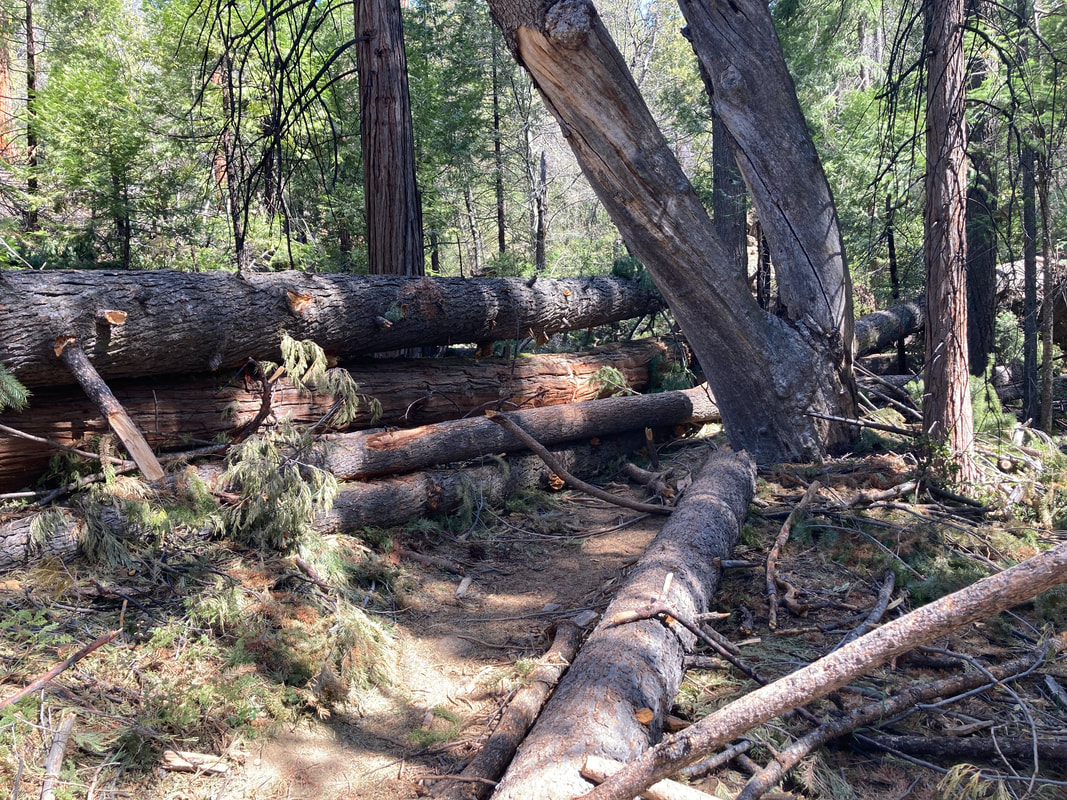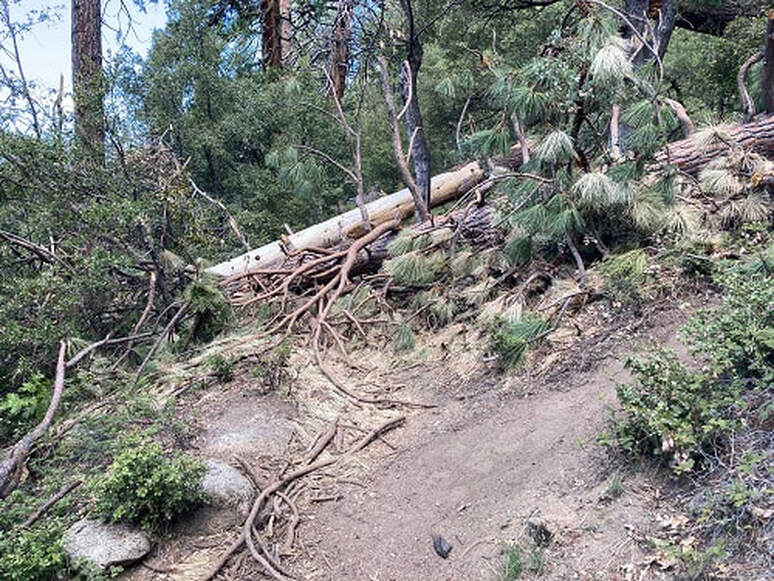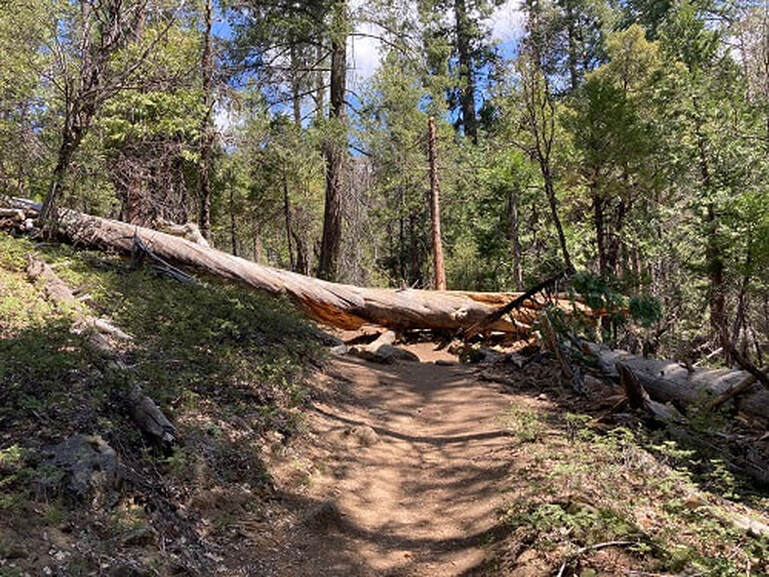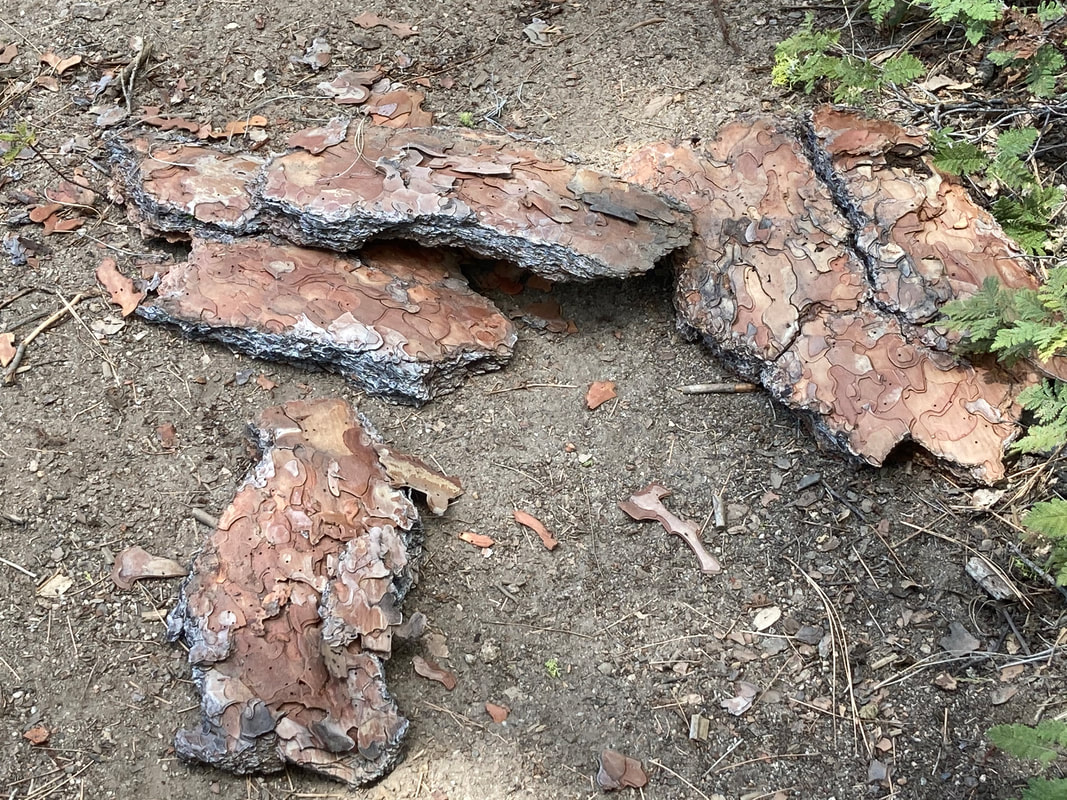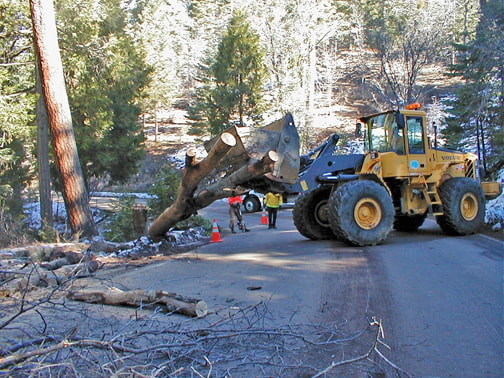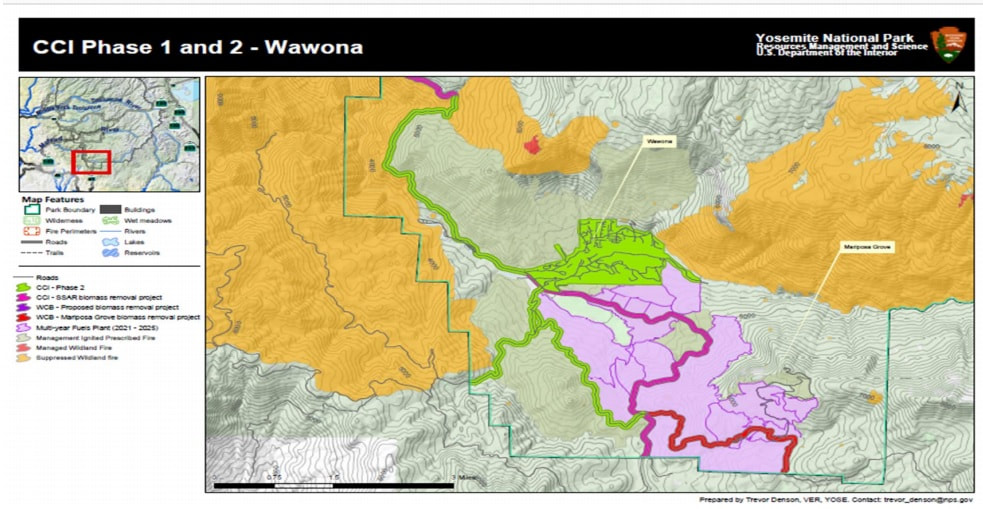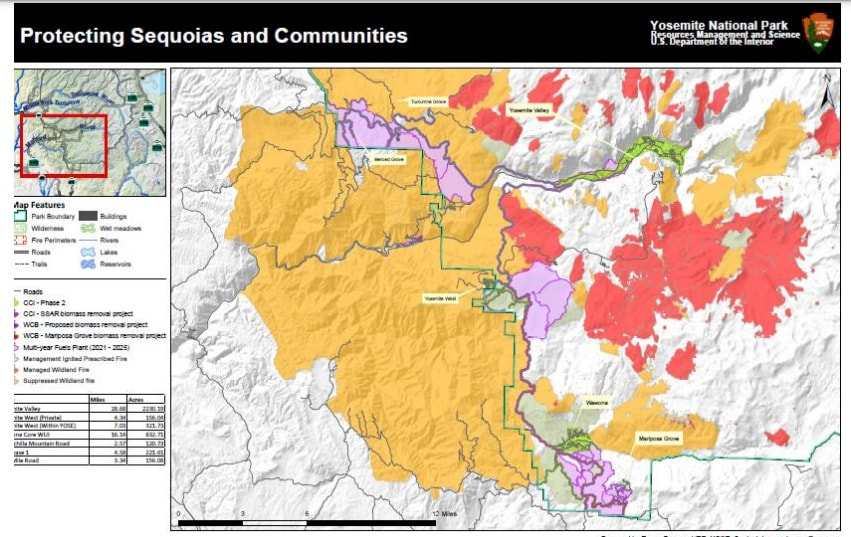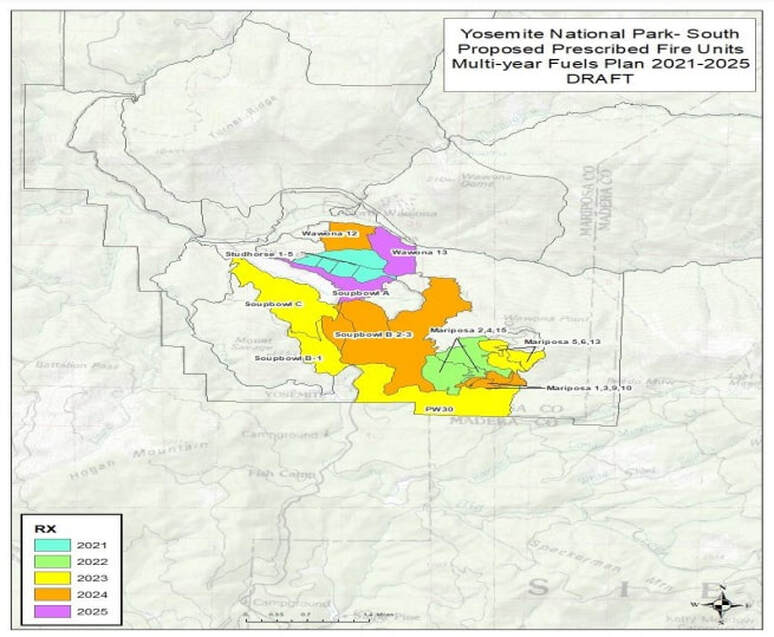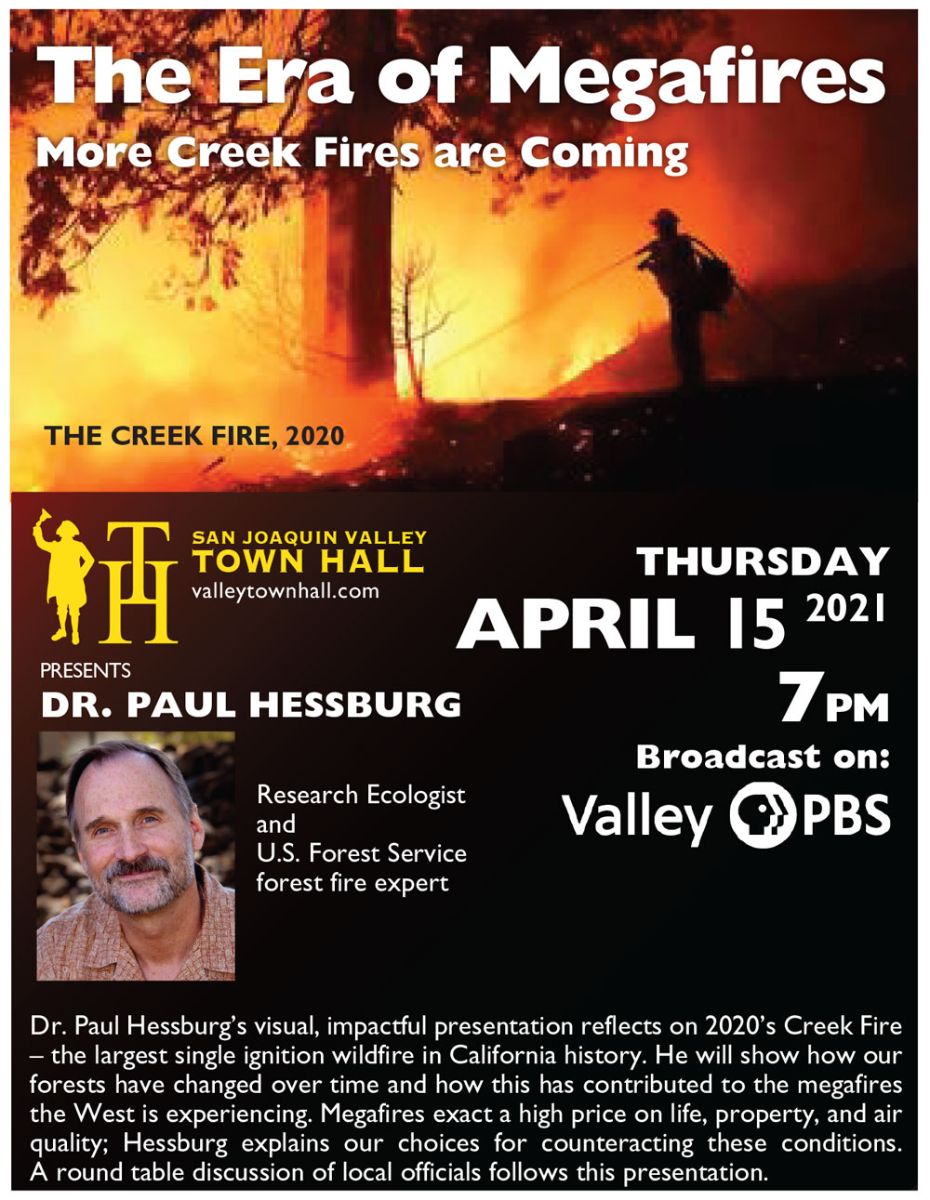WawonaNews.com - May 2021
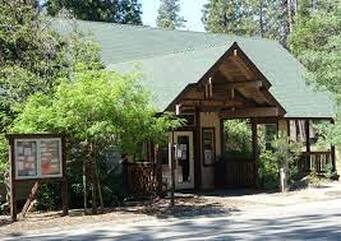
LIBRARY HOURS
TUESDAY &FRIDAY
12 NOON ~ 5 P.M.
SATURDAY
10 A.M. ~ 3 P.M.
CURBSIDE PICKUP ONLY
CALL THE LIBRARY IF YOU HAVE ANY QUESTIONS: 209-375-6510 WiFi is available in the library parking lot!!
To request items for pickup at the Wawona Bassett Memorial Library, visit https://sjvls.ent.sirsi.net/client/en_US/mzhq/? (The San Joaquin Valley Library System: Valley Cat) and log in using your library card number and pin number. Don't know your pin? It may be the last four digits of your phone number. Call the library (209-375-6510) to get it. You can search for items and request them by clicking ‘place hold’. Once your items have been delivered to the library you will be notified by either phone or email. To make an appointment to pick your items up, the librarian will call you when your items are available for curbside pickup. Call the library during open hours if you have any questions. 209-375-6510
TUESDAY &FRIDAY
12 NOON ~ 5 P.M.
SATURDAY
10 A.M. ~ 3 P.M.
CURBSIDE PICKUP ONLY
CALL THE LIBRARY IF YOU HAVE ANY QUESTIONS: 209-375-6510 WiFi is available in the library parking lot!!
To request items for pickup at the Wawona Bassett Memorial Library, visit https://sjvls.ent.sirsi.net/client/en_US/mzhq/? (The San Joaquin Valley Library System: Valley Cat) and log in using your library card number and pin number. Don't know your pin? It may be the last four digits of your phone number. Call the library (209-375-6510) to get it. You can search for items and request them by clicking ‘place hold’. Once your items have been delivered to the library you will be notified by either phone or email. To make an appointment to pick your items up, the librarian will call you when your items are available for curbside pickup. Call the library during open hours if you have any questions. 209-375-6510
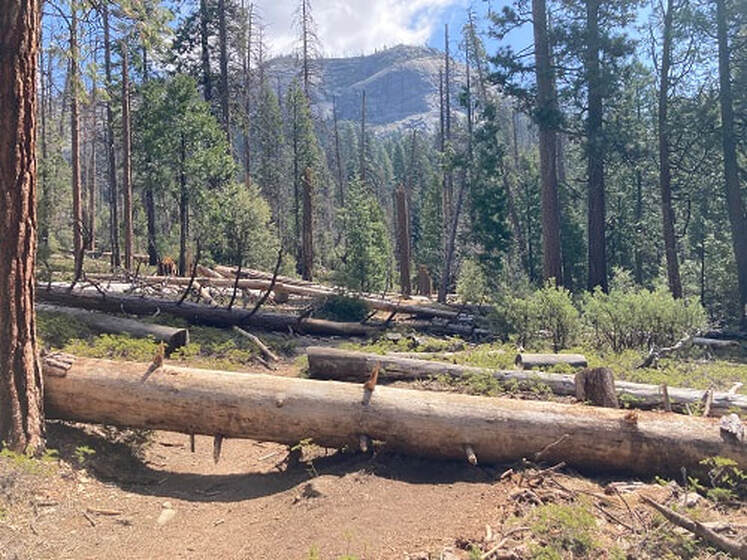
Chilnualna Falls Trail Anything But "Chill"
Apr. 21 - by F. Peinado
Remember when Chilnualna Falls Trail was a leisurely stroll up the mountain? OK, maybe not that leisurely. Especially not for us old fogies any more. But, either way, that was then. The trail right now is a lot more like an obstacle course than a trail. A lot of "Nualna", not much "Chill". There are dozens of trees blocking your path along the way, so if you are thinking of heading up that way, in addition to some water and trail mix, be sure to take a good dose of determination.
Apr. 21 - by F. Peinado
Remember when Chilnualna Falls Trail was a leisurely stroll up the mountain? OK, maybe not that leisurely. Especially not for us old fogies any more. But, either way, that was then. The trail right now is a lot more like an obstacle course than a trail. A lot of "Nualna", not much "Chill". There are dozens of trees blocking your path along the way, so if you are thinking of heading up that way, in addition to some water and trail mix, be sure to take a good dose of determination.
In some cases, creative hikers have figured out how to form short "bypass trails" around the fallen trees. But in other cases, where there's a steep drop on one side of the trail, the vegetation is too thick, or the fallen tree is too long, you'll need to climb over trees. Some of them pretty big.
This will all slow you down and tire you out a little more than usual, but it's not an impossible situation by any measure. If you are patient, you'll negotiate every single obstacle all the way to the top.
The first two miles are the most challenging. The third mile is pretty clear. And the start of the fourth mile has a number of sections to negotiate, but these are all easier than the ones further down. Nonetheless, to add to the "excitement", at one point, a relatively large chunk of bark crashed down 3 feet in front of me. I don't think it was big enough to kill me, but I'm sure glad I didn't take three more steps half a second before. It wouldn't have been much fun and certainly startled me considerably.
But then you get to the top, and you'll feel like it was all worth it. Especially this time of year with all that water roaring down the cascades. Just think of it as the price having gone up for all that impressive sight. But, hopefully, it won't be long before the park clears the way and lowers the price to its original amount.

Bears are officially active in Yosemite!
It's spring and Yosemite’s bears are officially out of their dens hungrily foraging around the park. The past five years have been some of the most successful years in terms of keeping bears wild with low bear incidents. This success will only continue if every park employee and resident work together to help protect wildlife:
Please follow these guidelines to continue the success!
Keep your homes (and offices) secure when nobody is there - windows and doors need to be closed and latched
Store pet food, trash, recycling, and other possible attractants in a secure part of your house - never outside!
Also keep in mind that many garages in the park are not secure enough to keep a bear out.
Keep your vehicles free of all food, trash, recycling, and other scented items.
Clip dumpsters every time you use them, or if you happen to see one unlatched.
Use a portable bear resistant food storage container on any overnight wilderness trip. Stay within arm's-reach of your food when it's not otherwise being stored properly.
Slow down on park roads! Wildlife has to cross, and can appear suddenly!
Give wildlife plenty of space! Enjoy them from a distance - at least 50 yards for a bear.
Report bear activity and food storage violations to the Save-A-Bear Hotline 209/372-0322 or email [email protected].
Thank you for doing your part to keep Yosemite’s bears wild and safe!
Yosemite Wildlife Team
-------------------------
Thanks,
Chad Andrews
Supervisory U.S. Park Ranger
Yosemite National Park
(W) 209-375-9520
(C) 209-742-8269
It's spring and Yosemite’s bears are officially out of their dens hungrily foraging around the park. The past five years have been some of the most successful years in terms of keeping bears wild with low bear incidents. This success will only continue if every park employee and resident work together to help protect wildlife:
Please follow these guidelines to continue the success!
Keep your homes (and offices) secure when nobody is there - windows and doors need to be closed and latched
Store pet food, trash, recycling, and other possible attractants in a secure part of your house - never outside!
Also keep in mind that many garages in the park are not secure enough to keep a bear out.
Keep your vehicles free of all food, trash, recycling, and other scented items.
Clip dumpsters every time you use them, or if you happen to see one unlatched.
Use a portable bear resistant food storage container on any overnight wilderness trip. Stay within arm's-reach of your food when it's not otherwise being stored properly.
Slow down on park roads! Wildlife has to cross, and can appear suddenly!
Give wildlife plenty of space! Enjoy them from a distance - at least 50 yards for a bear.
Report bear activity and food storage violations to the Save-A-Bear Hotline 209/372-0322 or email [email protected].
Thank you for doing your part to keep Yosemite’s bears wild and safe!
Yosemite Wildlife Team
-------------------------
Thanks,
Chad Andrews
Supervisory U.S. Park Ranger
Yosemite National Park
(W) 209-375-9520
(C) 209-742-8269
|
Wawona Road Biomass Removal
Contractors are removing biomass along Wawona Road between Wawona and the South Entrance. Delays up to 15 minutes may occur. Biomass removal is part of an ongoing project to reduce fuel loading along road corridors and to prepare for prescribed or wildland fires. Material is sent to co-gen facilities where it is converted to electricity. Email [email protected] for more information. (G. Dickman) |
Removal of Down Fuels
The maps below show the south end of Yosemite National Park and the worked planned for Phase 1 and proposed Phase 2. The project involves removing heavy dead and down fuels (logs) from 200 feet both sides of the centerline of roads (beyond 200 feet is designated wilderness). This will be followed up by hand crews thinning and piling small diameter fuels and trees, which will be pile burned in place along the roads where appropriate. Wawona residents are encouraged to partner with the park for Phase 2. After Phase 2 treatments will be a broadcast prescribed burns (see map at end of document for prescribed burn units in south end of Yosemite). Prescribed burns will be repeated every 5-12 years. The below map shows the entire park plan for phases 1 & 2 of the mechanical fuel reduction project.
The maps below show the south end of Yosemite National Park and the worked planned for Phase 1 and proposed Phase 2. The project involves removing heavy dead and down fuels (logs) from 200 feet both sides of the centerline of roads (beyond 200 feet is designated wilderness). This will be followed up by hand crews thinning and piling small diameter fuels and trees, which will be pile burned in place along the roads where appropriate. Wawona residents are encouraged to partner with the park for Phase 2. After Phase 2 treatments will be a broadcast prescribed burns (see map at end of document for prescribed burn units in south end of Yosemite). Prescribed burns will be repeated every 5-12 years. The below map shows the entire park plan for phases 1 & 2 of the mechanical fuel reduction project.
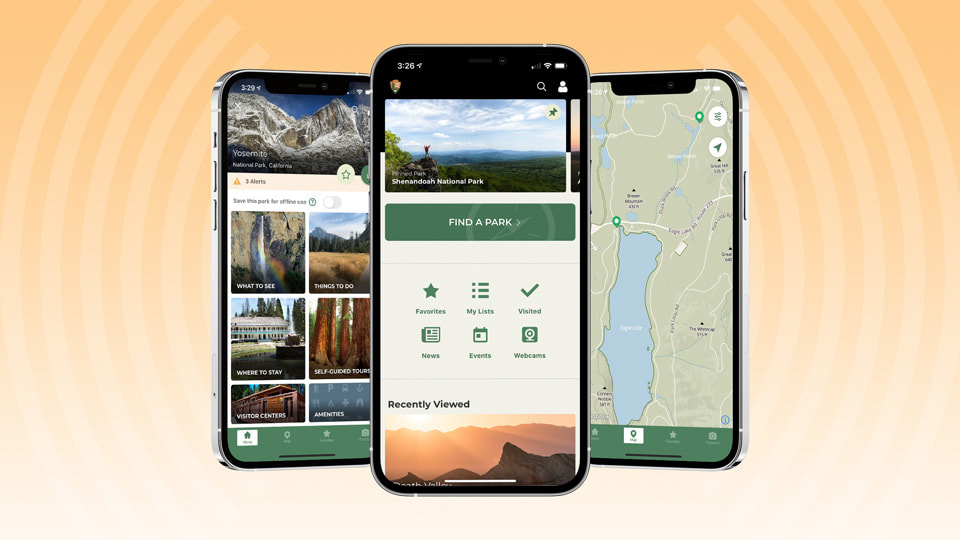
New National Park App
April 17, 2021 - WASHINGTON – Just in time for National Park Week, the new National Park Service (NPS) mobile app (go.nps.gov/app) is now available for visitors to national parks across the country. Created by park rangers with visitors in mind, the NPS App gives the public up-to-date information about all 423 national parks in one easy-to-use app.
Visitors can download the NPS App in the iOS App Store and Google Play Store to plan a trip, find interactive maps, download maps and tours ahead of time and find things to do and places to visit during National Park Week and beyond.
“National Park Week is a time for us to celebrate national parks and experience them in new ways,” said Deputy Director Shawn Benge. “We hope that visitors will recognize this opportunity to use the NPS App to discover their next national park adventure and learn more about these incredibly special places.”
During a time when many visitors are choosing to visit parks close to home, users of the App will be able to find a selection of nearby parks to explore. While planning a trip, users can build personalized trips and save and share information about their upcoming adventure with friends or family. The app is available offline, so visitors can download necessary resources ahead of time – especially important for visits to more remote areas.
While on a visit to national parks, the public is reminded to recreate responsibly, follow park safety guidelines and wear masks while inside all federal facilities and outside where physical distancing cannot be maintained.
The NPS App is fully accessible and includes tools for visitors with accessibility needs. While in the park, visitors can access self-guided tours to learn more about the park, create and share a virtual postcard and stay informed of alerts and closures.
With millions of visitors to national parks every year, visitors need a trusted source for park information available on their mobile device in one single app. During this first stage of the app, NPS staff are continuing to add detailed information and resources for users. The NPS App will continue to be a tool for visitors in the years to come as NPS staff develop new features to enhance the experience of visitors to national parks.
Source: NPS
April 17, 2021 - WASHINGTON – Just in time for National Park Week, the new National Park Service (NPS) mobile app (go.nps.gov/app) is now available for visitors to national parks across the country. Created by park rangers with visitors in mind, the NPS App gives the public up-to-date information about all 423 national parks in one easy-to-use app.
Visitors can download the NPS App in the iOS App Store and Google Play Store to plan a trip, find interactive maps, download maps and tours ahead of time and find things to do and places to visit during National Park Week and beyond.
“National Park Week is a time for us to celebrate national parks and experience them in new ways,” said Deputy Director Shawn Benge. “We hope that visitors will recognize this opportunity to use the NPS App to discover their next national park adventure and learn more about these incredibly special places.”
During a time when many visitors are choosing to visit parks close to home, users of the App will be able to find a selection of nearby parks to explore. While planning a trip, users can build personalized trips and save and share information about their upcoming adventure with friends or family. The app is available offline, so visitors can download necessary resources ahead of time – especially important for visits to more remote areas.
While on a visit to national parks, the public is reminded to recreate responsibly, follow park safety guidelines and wear masks while inside all federal facilities and outside where physical distancing cannot be maintained.
The NPS App is fully accessible and includes tools for visitors with accessibility needs. While in the park, visitors can access self-guided tours to learn more about the park, create and share a virtual postcard and stay informed of alerts and closures.
With millions of visitors to national parks every year, visitors need a trusted source for park information available on their mobile device in one single app. During this first stage of the app, NPS staff are continuing to add detailed information and resources for users. The NPS App will continue to be a tool for visitors in the years to come as NPS staff develop new features to enhance the experience of visitors to national parks.
Source: NPS
Yosemite Pioneer History Center - by Tom Bopp
10 Ways Yosemite Will be Different This Year
BY CARMEN GEORGE - Fresno Bee
APRIL 12
Yosemite National Park has announced that it will again limit visitors to the popular park in California in spring and summer 2021 due to COVID-19.
To do that, online reservations to enter Yosemite will be required for day-use visitors, and a number of park services will be limited or unavailable.
The new entrance restrictions will be in place May 21 through Sept. 31, “or until local health conditions improve.”
Yosemite first implemented the reservation system last summer and brought it back temporarily in February.
The following is a list of 10 ways Yosemite will be different in the coming months.
1. ONLINE RESERVATIONS NEEDED TO ENTER FOR DAY-USE VISITORS
Most visitors will need an online day-use reservation to enter Yosemite this summer.
APRIL 12
Yosemite National Park has announced that it will again limit visitors to the popular park in California in spring and summer 2021 due to COVID-19.
To do that, online reservations to enter Yosemite will be required for day-use visitors, and a number of park services will be limited or unavailable.
The new entrance restrictions will be in place May 21 through Sept. 31, “or until local health conditions improve.”
Yosemite first implemented the reservation system last summer and brought it back temporarily in February.
The following is a list of 10 ways Yosemite will be different in the coming months.
1. ONLINE RESERVATIONS NEEDED TO ENTER FOR DAY-USE VISITORS
Most visitors will need an online day-use reservation to enter Yosemite this summer.
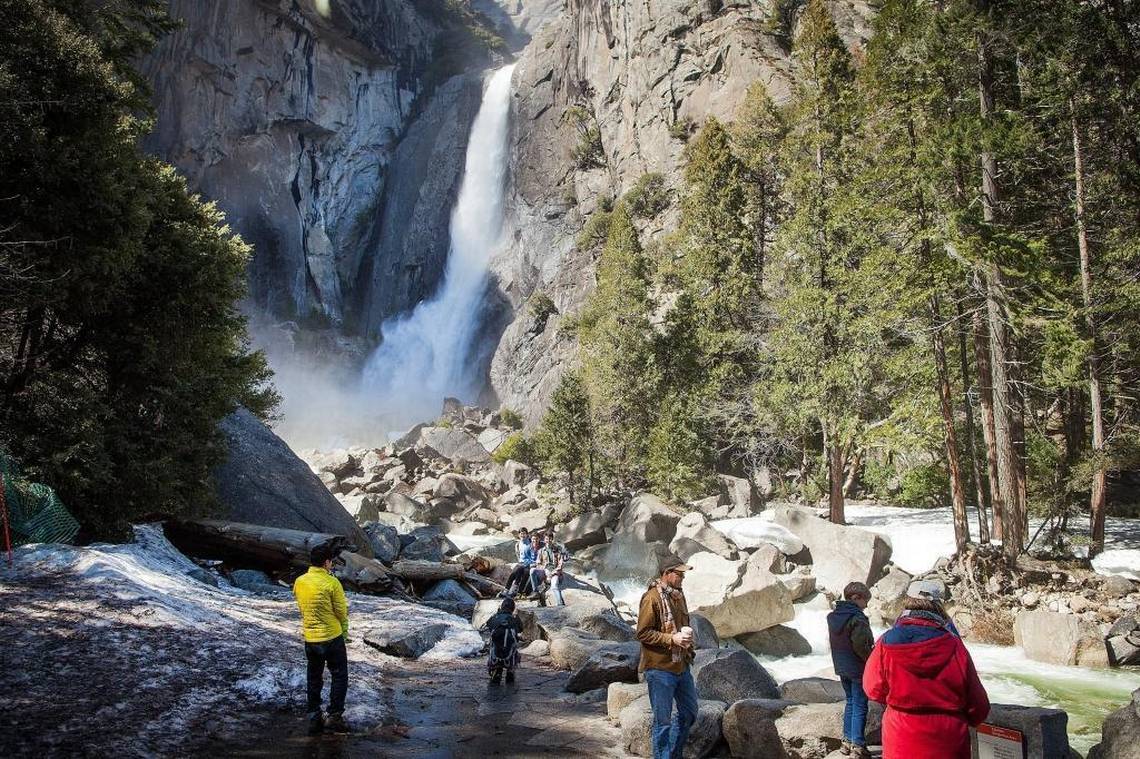
Tourists walk around the base of Lower Yosemite Falls as it thunders down the cliffs at Yosemite National Park on March 23, 2017. CRAIG KOHLRUSS [email protected]
These $2 entrance passes – required in addition to normal park entrance fees – can’t be purchased at the park entrance stations. They become available on recreation.gov starting April 21, where they are listed as “Day Use Entry” under “Yosemite National Park Ticketed Entry.”
Only one is needed per vehicle and the pass covers everyone inside from 5 a.m. to 11 p.m.
Unlike before, 20% of entry passes are no longer being held two days prior to a visit.
All will be available for purchase at 8 a.m. Pacific time on the following dates:
“Each user can make one reservation per arrival date,” Yosemite officials said. “An occupant of the arriving vehicle must have the user (with photo ID) who made the reservation.”
Online day-use passes aren’t needed to enter for visitors with an overnight reservation inside the park – including in the private communities of Wawona, Yosemite West or Foresta, which can only be accessed by first entering the park. They’re also not needed for those with a bus or commercial tour ticket, a wilderness or Half Dome permit, or who enter on foot, bicycle or horseback. Additionally, day-use visitors to Hetch Hetchy won’t need them to visit that part of the park, as long as parking remains available there.
Entrance passes and day-use reservations are non-transferable. They are only valid for the person who made the reservation and all within that person’s vehicle.
However, for groups with overnight reservations, wilderness and Half Dome permits, multiple vehicles can be granted a vehicle permit at an entrance station, but “an occupant in each vehicle must provide a copy or photo of the driver license belonging to the person who made the reservation (as well as a copy of the reservation) to be permitted to enter.”
Only one is needed per vehicle and the pass covers everyone inside from 5 a.m. to 11 p.m.
Unlike before, 20% of entry passes are no longer being held two days prior to a visit.
All will be available for purchase at 8 a.m. Pacific time on the following dates:
- April 21 (for arrivals between May 21 and June 30)
- April 28 (for arrivals between July 1 and July 31)
- May 5 (for arrivals between Aug. 1 and Aug. 31)
- May 12 (for arrivals between Sept. 1 and Sept. 30)
- May 14 to Sept. 23 (for arrivals seven days in advance)
“Each user can make one reservation per arrival date,” Yosemite officials said. “An occupant of the arriving vehicle must have the user (with photo ID) who made the reservation.”
Online day-use passes aren’t needed to enter for visitors with an overnight reservation inside the park – including in the private communities of Wawona, Yosemite West or Foresta, which can only be accessed by first entering the park. They’re also not needed for those with a bus or commercial tour ticket, a wilderness or Half Dome permit, or who enter on foot, bicycle or horseback. Additionally, day-use visitors to Hetch Hetchy won’t need them to visit that part of the park, as long as parking remains available there.
Entrance passes and day-use reservations are non-transferable. They are only valid for the person who made the reservation and all within that person’s vehicle.
However, for groups with overnight reservations, wilderness and Half Dome permits, multiple vehicles can be granted a vehicle permit at an entrance station, but “an occupant in each vehicle must provide a copy or photo of the driver license belonging to the person who made the reservation (as well as a copy of the reservation) to be permitted to enter.”
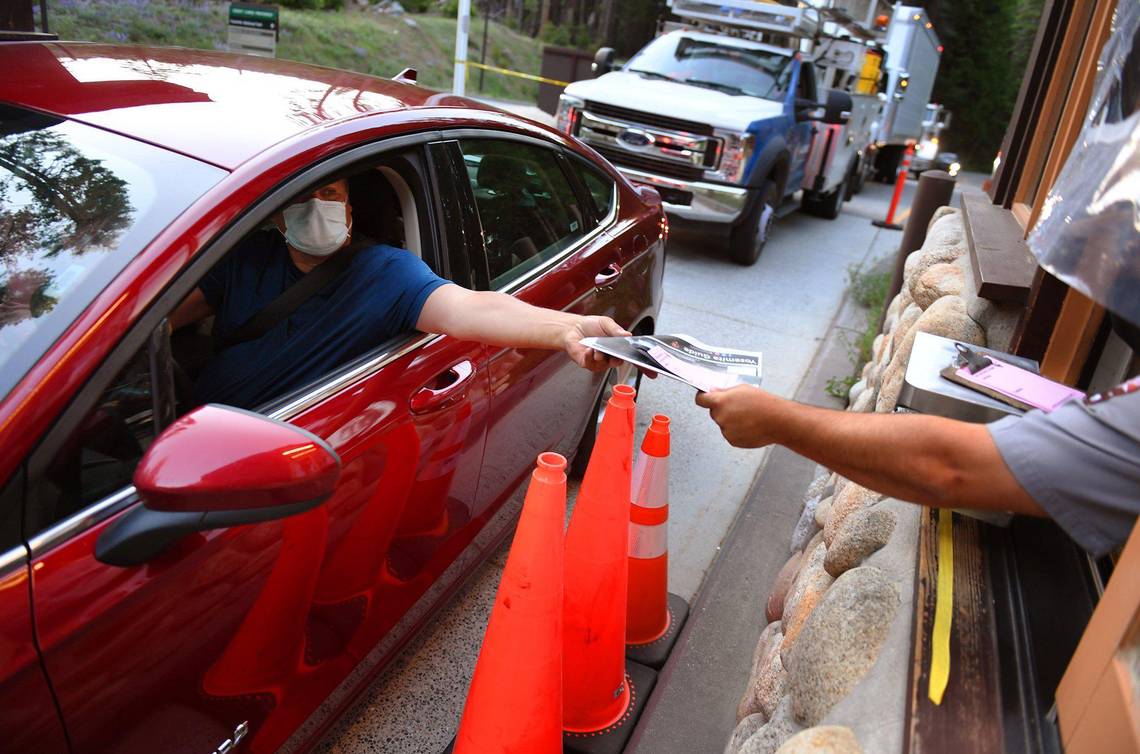
James Otterman, from Virginia, left, takes park information after checking in at the south entrance as Yosemite National Park re-opens after a historic closure Thursday, June 11, 2020. Otterman said he was on his way to see the couple’s daughter in Northern California and the timing was perfect for a visit to Yosemite. ERIC PAUL ZAMORA [email protected]
2. YOU DON’T HAVE TO ARRIVE ON FIRST DAY, BUT PASS VALID FOR LESS TIME
Visitors no longer have to arrive on the first day of their reservation to enter like they did last summer.
However, for visitors starting May 21, entrance fees will only grant three days of entries from the start date of the reservation. It’s normally seven days.
This means if you arrive on the third day of your reservation, for example, you can only get into the park on that day.
Entrance fees will go back to covering seven days when the online reservation system ends.
For those with overnight reservations, wilderness permits, etc., “the permit is valid for the duration of the reservation or three days, whichever is longer.”
3. GOAL: LESS TRAFFIC AND VISITORS IN YOSEMITE THAN USUAL
There will be fewer visitors in Yosemite this year than prior to the pandemic, but more than last year.
Park staff said changing Yosemite access from seven to three days will allow more visitors to enter the park than in 2020.
An additional 950 to 1,850 more day-use passes should be issued each week in 2021. Additional passes will be offered Sundays through Wednesdays.
About 11,000 visitors a day were allowed into Yosemite last summer, park officials said.
Visitors no longer have to arrive on the first day of their reservation to enter like they did last summer.
However, for visitors starting May 21, entrance fees will only grant three days of entries from the start date of the reservation. It’s normally seven days.
This means if you arrive on the third day of your reservation, for example, you can only get into the park on that day.
Entrance fees will go back to covering seven days when the online reservation system ends.
For those with overnight reservations, wilderness permits, etc., “the permit is valid for the duration of the reservation or three days, whichever is longer.”
3. GOAL: LESS TRAFFIC AND VISITORS IN YOSEMITE THAN USUAL
There will be fewer visitors in Yosemite this year than prior to the pandemic, but more than last year.
Park staff said changing Yosemite access from seven to three days will allow more visitors to enter the park than in 2020.
An additional 950 to 1,850 more day-use passes should be issued each week in 2021. Additional passes will be offered Sundays through Wednesdays.
About 11,000 visitors a day were allowed into Yosemite last summer, park officials said.
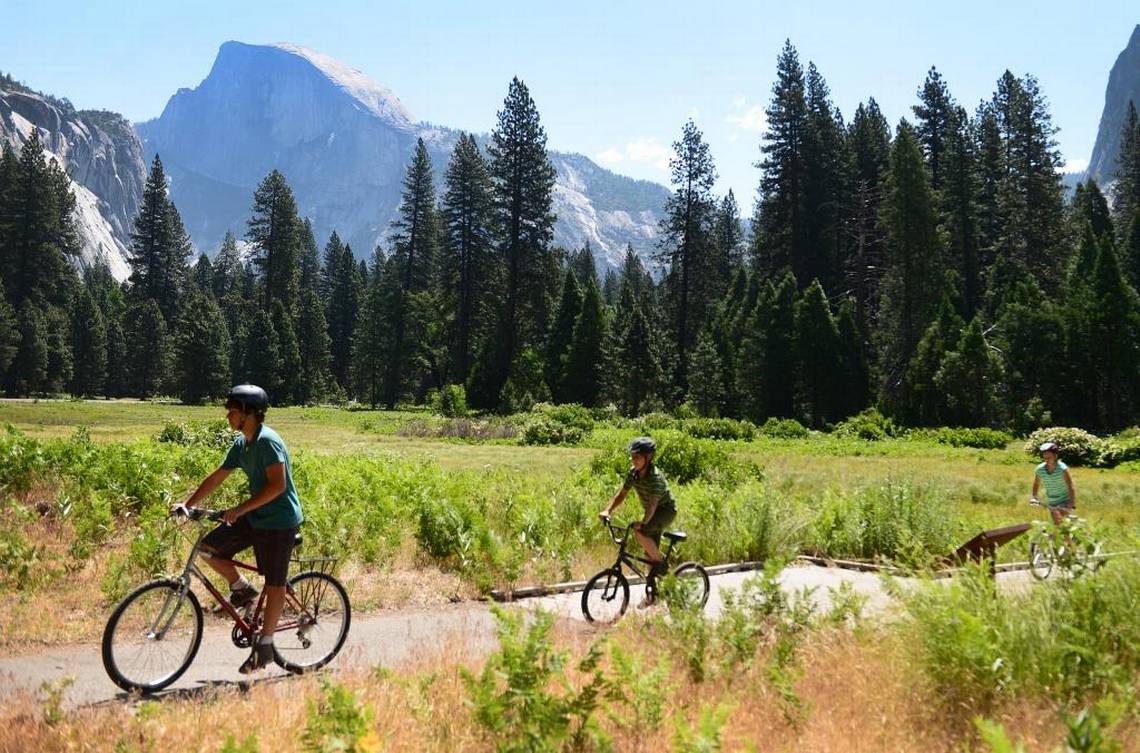
Bicyclists ride along on the Yosemite Valley floor with Half Dome in the distance in June 2014. CRAIG KOHLRUSS [email protected]
Parkwide vehicle targets range from 3,600 a day (also last year’s goal) at the most restrictive tier, to 6,480 a day – 90% of June 2019 levels. That year, prior to the pandemic, Yosemite had more than 4.5 million visitors.
Yosemite spokespeople didn’t provide further information about the estimated number of day-use passes to be issued this year, or the estimated number of visitors, saying only that these numbers will be determined by public health conditions.
Yosemite Superintendent Cicely Muldoon talked about wanting to reduce traffic congestion in Yosemite Valley before announcing the park’s summer plans during Thursday’s Yosemite Gateway Partners meeting.
4. NO PARK SHUTTLES, BUT YARTS BUSES STILL RUNNING
However, free park shuttles won’t be running again this year, which means more people than usual may be driving. These shuttles also didn’t operate in 2020 because of the pandemic.
This applies to all of the park’s shuttles and hiker buses, in Yosemite Valley, Tuolumne Meadows, and to the Mariposa Grove of Giant Sequoias.
The park’s concessionaire, Aramark’s Yosemite Hospitality, is also not operating any bus tours this year.
Yosemite Area Regional Transportation (YARTS) buses into the park are still running, at reduced capacity (30 people per bus, with 22 available by reservation). People riding a YARTS bus don’t need a day-use reservation to enter the park.
“Shuttles and tours are not operating this year due to lack of staffing,” Yosemite officials said. “Shared housing for seasonal employees in Yosemite is significantly lower than usual this year in order to keep employees safe.”
Yosemite shuttle bus drivers and transportation workers were laid off and evicted in the spring of 2020. After news of that spread, Aramark said employees weren’t being made to leave the park during the eviction moratorium.
Approximately 178 large tour buses will have access this summer – 50% of normal.
5. PEOPLE CAN DRIVE THROUGH YOSEMITE WITHOUT A RESERVATION
Last year, only some area residents who needed to pass through the park to a destination on the other side were supposed to be allowed to drive through Yosemite without a day-use reservation.
This year, reservations won’t be needed to drive through Yosemite, but normal park entrance fees still apply.
“The entrance station ranger will provide a time-stamped permit valid for the time needed to travel from entrance to entrance,” park officials said. “You must drive the most direct route to exit the park; stopping is prohibited. Violating park regulations can result in a fine of up to $5,000 and/or six months in jail.”
However, the park entrance fee does provide access to visit Hetchy Hetchy during open hours. Hetch Hetchy Road will only be open from 8 a.m. to 5 p.m.
Yosemite spokespeople didn’t provide further information about the estimated number of day-use passes to be issued this year, or the estimated number of visitors, saying only that these numbers will be determined by public health conditions.
Yosemite Superintendent Cicely Muldoon talked about wanting to reduce traffic congestion in Yosemite Valley before announcing the park’s summer plans during Thursday’s Yosemite Gateway Partners meeting.
4. NO PARK SHUTTLES, BUT YARTS BUSES STILL RUNNING
However, free park shuttles won’t be running again this year, which means more people than usual may be driving. These shuttles also didn’t operate in 2020 because of the pandemic.
This applies to all of the park’s shuttles and hiker buses, in Yosemite Valley, Tuolumne Meadows, and to the Mariposa Grove of Giant Sequoias.
The park’s concessionaire, Aramark’s Yosemite Hospitality, is also not operating any bus tours this year.
Yosemite Area Regional Transportation (YARTS) buses into the park are still running, at reduced capacity (30 people per bus, with 22 available by reservation). People riding a YARTS bus don’t need a day-use reservation to enter the park.
“Shuttles and tours are not operating this year due to lack of staffing,” Yosemite officials said. “Shared housing for seasonal employees in Yosemite is significantly lower than usual this year in order to keep employees safe.”
Yosemite shuttle bus drivers and transportation workers were laid off and evicted in the spring of 2020. After news of that spread, Aramark said employees weren’t being made to leave the park during the eviction moratorium.
Approximately 178 large tour buses will have access this summer – 50% of normal.
5. PEOPLE CAN DRIVE THROUGH YOSEMITE WITHOUT A RESERVATION
Last year, only some area residents who needed to pass through the park to a destination on the other side were supposed to be allowed to drive through Yosemite without a day-use reservation.
This year, reservations won’t be needed to drive through Yosemite, but normal park entrance fees still apply.
“The entrance station ranger will provide a time-stamped permit valid for the time needed to travel from entrance to entrance,” park officials said. “You must drive the most direct route to exit the park; stopping is prohibited. Violating park regulations can result in a fine of up to $5,000 and/or six months in jail.”
However, the park entrance fee does provide access to visit Hetchy Hetchy during open hours. Hetch Hetchy Road will only be open from 8 a.m. to 5 p.m.
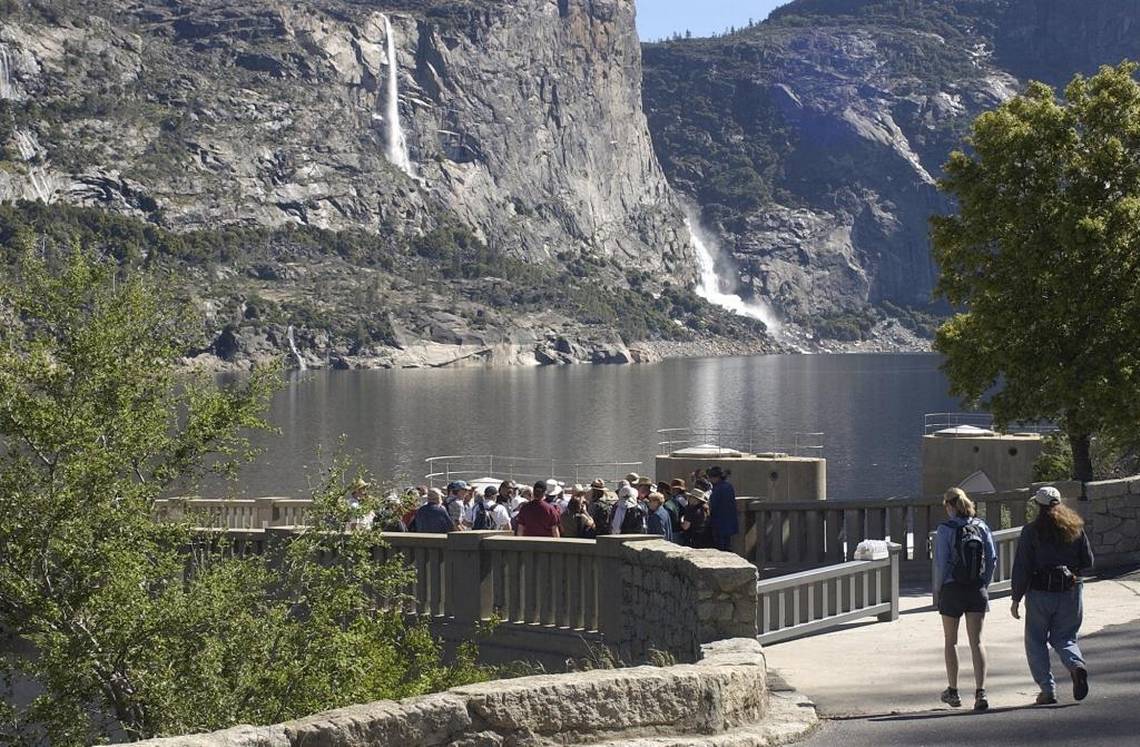
In 1913, San Francisco lobbied Congress for permission to dam Hetch Hetchy Valley – a project the city had been pursuing for decades. Three years later, Congress created the National Park Service to ensure that our parks would be managed as a single system for national benefit. Marty Bicek MODESTO BEE FILE
If entering the park at night when an entrance station isn’t staffed, officials said “you must complete a self-certification card at the entrance station and display it in your windshield. You must also be in possession of a valid in-park reservation or permit.
“Entering the park without a permit or valid self-certification card is a violation of federal regulations, with maximum penalties of a $5,000 fine and/or up to six months in jail. Rangers are on patrol when entrance stations are unstaffed.”
6. MASKS REQUIRED AS COVID-19 PERSISTSThere is now a federal mask mandate that applies to Yosemite.
“This is a directive for all of our employees, concessionaires, contractors and visitors to wear a facial covering when they’re on federal property,” said George Carroll, a public health representative for the National Park Service, during Thursday’s meeting. “Specifically, inside buildings, but also in an outdoor setting when social distancing can’t be maintained. So think about crowded trails or crowded viewpoints in a park.
“It’s something we wish we had last year, but obviously we’re glad to have it now, and it’s an important expectation for our staff and our visitors in controlling COVID as we continue to go through the pandemic.”
“Entering the park without a permit or valid self-certification card is a violation of federal regulations, with maximum penalties of a $5,000 fine and/or up to six months in jail. Rangers are on patrol when entrance stations are unstaffed.”
6. MASKS REQUIRED AS COVID-19 PERSISTSThere is now a federal mask mandate that applies to Yosemite.
“This is a directive for all of our employees, concessionaires, contractors and visitors to wear a facial covering when they’re on federal property,” said George Carroll, a public health representative for the National Park Service, during Thursday’s meeting. “Specifically, inside buildings, but also in an outdoor setting when social distancing can’t be maintained. So think about crowded trails or crowded viewpoints in a park.
“It’s something we wish we had last year, but obviously we’re glad to have it now, and it’s an important expectation for our staff and our visitors in controlling COVID as we continue to go through the pandemic.”
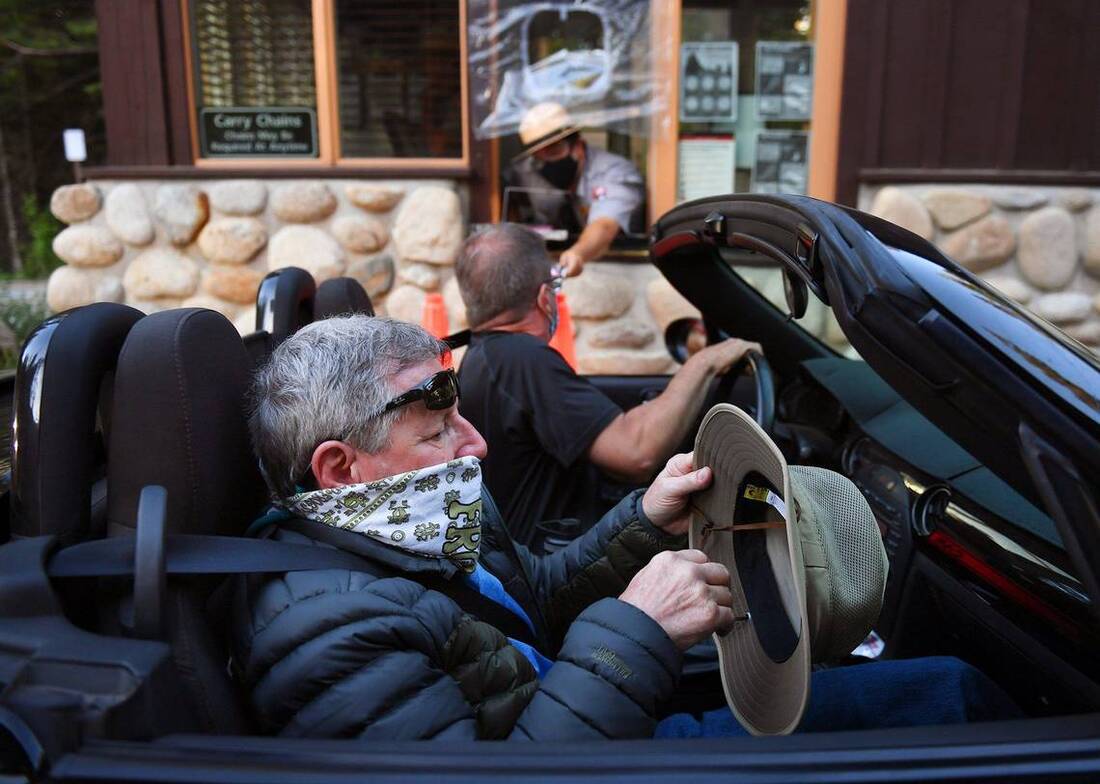
Richard Trotter, foreground, fixes his hat as a ranger hands his son Chad Trotter information at the south entrance of Yosemite National Park as it re-opens after a historic closure Thursday, June 11, 2020. The Trotters said they drove 12 hours from Prescott, AZ. just for the event. ERIC PAUL ZAMORA [email protected]
Yosemite officials haven’t shared the number of COVID-19 cases in the park, but coronavirus has been reported in Yosemite. Park staff on Thursday said there was “very low COVID transmission” among employees in Yosemite. Coronavirus cases remain high in nearby central San Joaquin Valley counties but have been dropping.
Gov. Gavin Newsom announced Tuesday that California will fully reopen its economy June 15 as long as it has enough COVID-19 vaccines and hospitalizations are low.
Muldoon said she’s glad to see COVID-19 conditions improving in California, but conditions outside the state aren’t looking quite as good, and Yosemite visitors come from across the world. A more contagious strain of the virus, the U.K. variant, now considered the dominant strain in the U.S., is also posing a new challenge.
Muldoon said the decision to bring the reservation system back was made after a “rigorous risk assessment” with public health officials.
“The whole National Park Service is taking a look at this,” she said, “and there are other parks that are looking at a managed access system.”
7. SOME MODIFIED HIKING TRAILS, CLOSED AREAS
All trails are open in Yosemite, but some have been modified because of the pandemic.
Later this spring, descending the Mist Trail steps from the top of Vernal Fall won’t be allowed from 9 a.m. to 4 p.m. Hikers trying to return during that time will have to take the nearby John Muir Trail down.
The Bridalveil Fall area will stay closed this summer due to maintenance work and an ongoing project there.
Gov. Gavin Newsom announced Tuesday that California will fully reopen its economy June 15 as long as it has enough COVID-19 vaccines and hospitalizations are low.
Muldoon said she’s glad to see COVID-19 conditions improving in California, but conditions outside the state aren’t looking quite as good, and Yosemite visitors come from across the world. A more contagious strain of the virus, the U.K. variant, now considered the dominant strain in the U.S., is also posing a new challenge.
Muldoon said the decision to bring the reservation system back was made after a “rigorous risk assessment” with public health officials.
“The whole National Park Service is taking a look at this,” she said, “and there are other parks that are looking at a managed access system.”
7. SOME MODIFIED HIKING TRAILS, CLOSED AREAS
All trails are open in Yosemite, but some have been modified because of the pandemic.
Later this spring, descending the Mist Trail steps from the top of Vernal Fall won’t be allowed from 9 a.m. to 4 p.m. Hikers trying to return during that time will have to take the nearby John Muir Trail down.
The Bridalveil Fall area will stay closed this summer due to maintenance work and an ongoing project there.
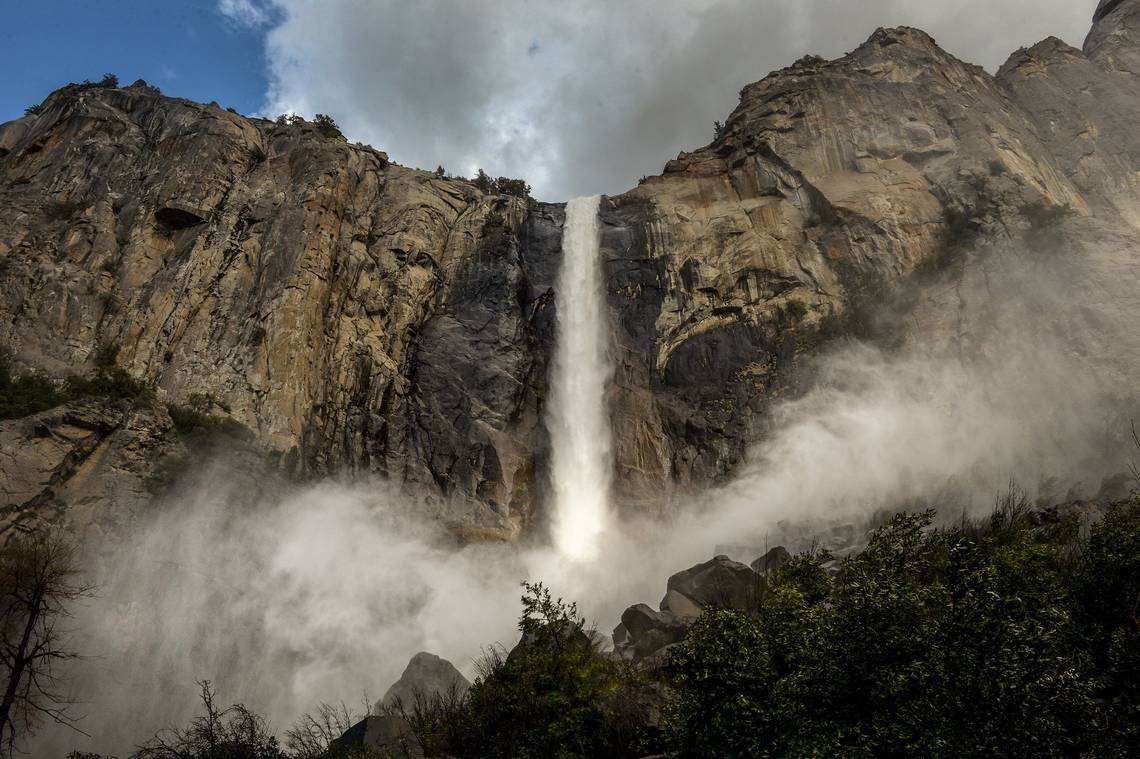
Bridalveil Fall flows into Yosemite Valley at near peak levels on Tuesday, April 30, 2019. CRAIG KOHLRUSS [email protected]
Mariposa Grove is expected to reopen this spring following its closure due to a destructive Mono wind event earlier this year that toppled some giant sequoias and crushed a bathroom there.
Backpacking is still allowed with a wilderness permit. A normal number of Half Dome and wilderness permits will be issued, but all wilderness permits must be obtained online starting April 30. Normally, 40% were available at wilderness centers.
“When hiking, keep your distance,” Yosemite officials said. “Give others plenty of room whether you are on a trail or in a parking lot. If staying at least six feet from others is not possible, wear a cloth face covering over your nose and mouth.”
Backpacking is still allowed with a wilderness permit. A normal number of Half Dome and wilderness permits will be issued, but all wilderness permits must be obtained online starting April 30. Normally, 40% were available at wilderness centers.
“When hiking, keep your distance,” Yosemite officials said. “Give others plenty of room whether you are on a trail or in a parking lot. If staying at least six feet from others is not possible, wear a cloth face covering over your nose and mouth.”
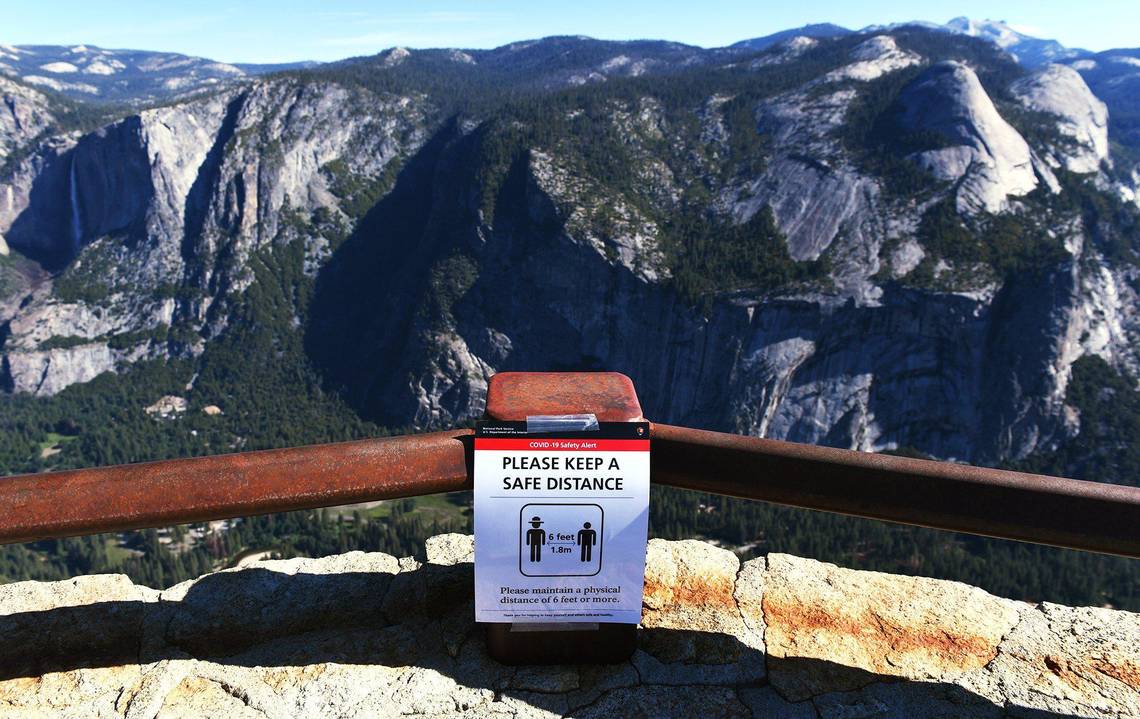
A reminder to keep social distancing can be seen at Glacier Point overlooking Yosemite Valley as the park re-opens after closure due to coronavirus Thursday morning, June 11, 2020. ERIC PAUL ZAMORA [email protected]
8. NO WALK-IN CAMPGROUNDS
Yosemite’s walk-in campgrounds are not opening this year due to a lack of staffing.
In campgrounds that require a reservation, there will be 585 campsites open this summer after July 1 compared to 247 last summer. Open campgrounds include Upper Pines, Lower Pines, North Pines, Camp 4, Wawona, Bridalveil Creek and Tuolumne Meadows.
High Sierra Camps in the backcountry won’t open this year.
9. LODGING AND RESTAURANT CHANGES
Like the park’s campgrounds, Yosemite lodging is open at a reduced capacity, but 1,007 Yosemite rooms will still be open this summer under the least-restrictive COVID-19 tier compared to 613 open last summer.
This increase affects the number of day-use passes issued for visitors without an overnight reservation.
“The opening of more lodging and camping facilities inside the park means more vehicles entering the park will be staying overnight inside the park,” officials said, “making fewer day-use reservations available at the more restrictive tiers.”
Yosemite’s walk-in campgrounds are not opening this year due to a lack of staffing.
In campgrounds that require a reservation, there will be 585 campsites open this summer after July 1 compared to 247 last summer. Open campgrounds include Upper Pines, Lower Pines, North Pines, Camp 4, Wawona, Bridalveil Creek and Tuolumne Meadows.
High Sierra Camps in the backcountry won’t open this year.
9. LODGING AND RESTAURANT CHANGES
Like the park’s campgrounds, Yosemite lodging is open at a reduced capacity, but 1,007 Yosemite rooms will still be open this summer under the least-restrictive COVID-19 tier compared to 613 open last summer.
This increase affects the number of day-use passes issued for visitors without an overnight reservation.
“The opening of more lodging and camping facilities inside the park means more vehicles entering the park will be staying overnight inside the park,” officials said, “making fewer day-use reservations available at the more restrictive tiers.”
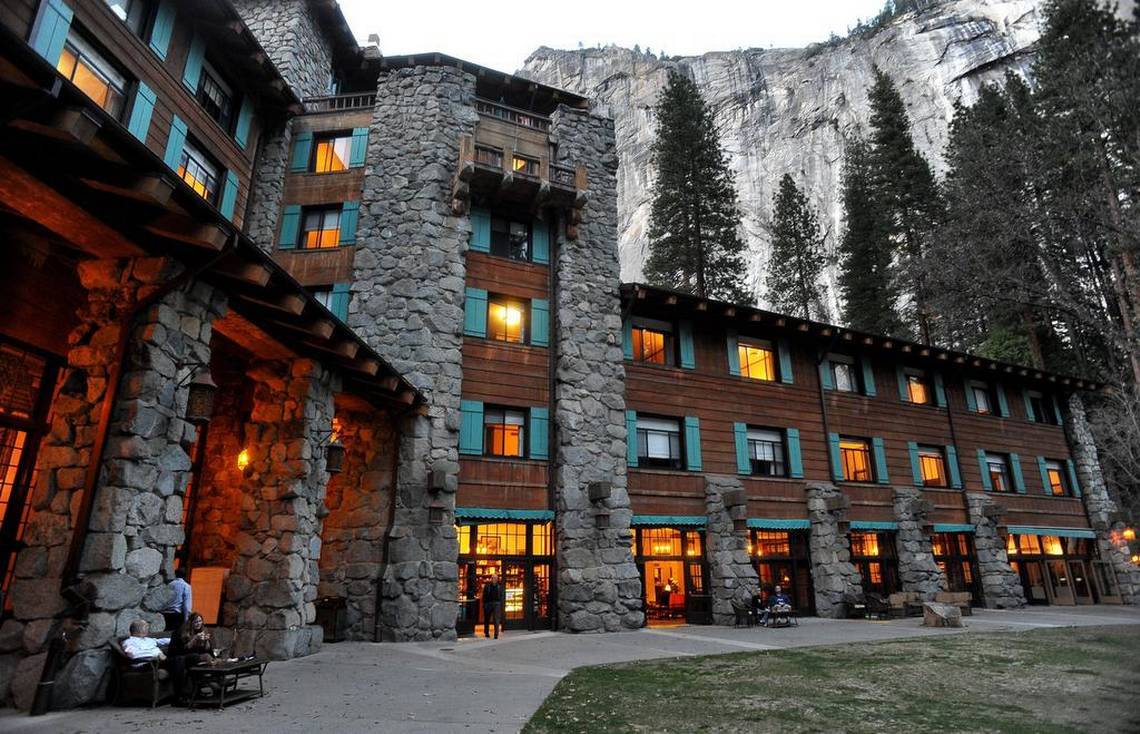
The historic Ahwahnee Hotel lit up as dusk falls over Yosemite Valley. JOHN WALKER [email protected]
Lodging that will be open this summer includes The Ahwahnee, Yosemite Valley Lodge, Curry Village, Housekeeping Camp, Scenic Wonders, The Redwoods in Yosemite, and all other vacation rentals inside the park or Yosemite West. The Wawona Hotel, which has been closed for repairs since last year, is expected to open June 10.
Housekeeping, which has also been closed, is scheduled to open April 23 at 50% capacity.
Off Tioga Road in the high country, White Wolf Lodge and Tuolumne Meadows Lodge won’t open this year.
Dining and food options will also be different. The Mountain Room Restaurant at Yosemite Valley Lodge will be closed, but The Mountain Room Lounge, which offers drinks and food, will be open.
There won’t be tableside service in The Ahwahnee Dining Room this year, but the dining room will be open with limited seating. Takeout is also available.
At Yosemite Village, The Loft at Degnan’s is closed, but the Village Grill is scheduled to open May 15. In nearby Curry Village, the Seven Tents Pavilion eatery is closed.
10. OTHER YOSEMITE CLOSURES
Here’s a list of other closures and changes in Yosemite this year:
The 10 limit is for everyone involved in the wedding – including the bride and groom, and photographers and officiant – not just wedding guests. Those 10 individuals won’t need a separate online day-use pass, but each vehicle will have to show a copy of the wedding permit at a park entrance station to get in.
Housekeeping, which has also been closed, is scheduled to open April 23 at 50% capacity.
Off Tioga Road in the high country, White Wolf Lodge and Tuolumne Meadows Lodge won’t open this year.
Dining and food options will also be different. The Mountain Room Restaurant at Yosemite Valley Lodge will be closed, but The Mountain Room Lounge, which offers drinks and food, will be open.
There won’t be tableside service in The Ahwahnee Dining Room this year, but the dining room will be open with limited seating. Takeout is also available.
At Yosemite Village, The Loft at Degnan’s is closed, but the Village Grill is scheduled to open May 15. In nearby Curry Village, the Seven Tents Pavilion eatery is closed.
10. OTHER YOSEMITE CLOSURES
Here’s a list of other closures and changes in Yosemite this year:
- In Yosemite Valley: Raft rentals, Happy Isles Art and Nature Center, the Valley Visitor Center Theater (including park films), boulders beneath Lower Yosemite Fall, Housekeeping Camp laundry, pools at Yosemite Valley Lodge and Curry Village, tour desk at Yosemite Valley Lodge, stables, dog kennel, Housekeeping Camp Store, and Yosemite Museum (except for the Indian Cultural Village) are all closed. Yosemite Mountaineering School is scheduled to open May 21.
- In Wawona: The golf course, stable, and visitor center (Hill’s Studio) are closed, but wilderness permits will be available on the porch of the center later this spring.
- In the Tuolumne Meadows area and along Tioga Road: Crane Flat Store will be closed, but gas is available there 24/7 at the pump. Yosemite officials said they don’t yet know if the Tuolumne Meadows store, post office, and grill will open this year.
The 10 limit is for everyone involved in the wedding – including the bride and groom, and photographers and officiant – not just wedding guests. Those 10 individuals won’t need a separate online day-use pass, but each vehicle will have to show a copy of the wedding permit at a park entrance station to get in.
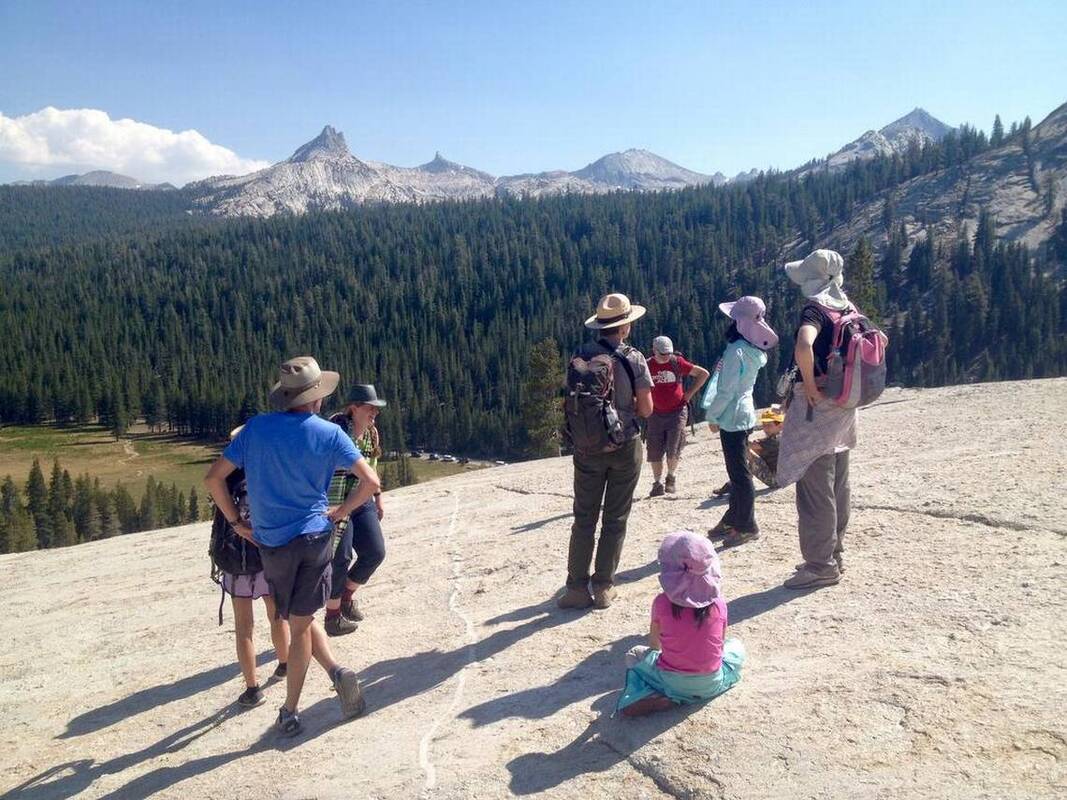
Park ranger Salli Lundgren talks about history and geological features during a junior ranger walk on top of Pothole Dome in Yosemite’s Tuolumne Meadows on Thursday, Aug. 25, 2016. CARMEN GEORGE [email protected]
